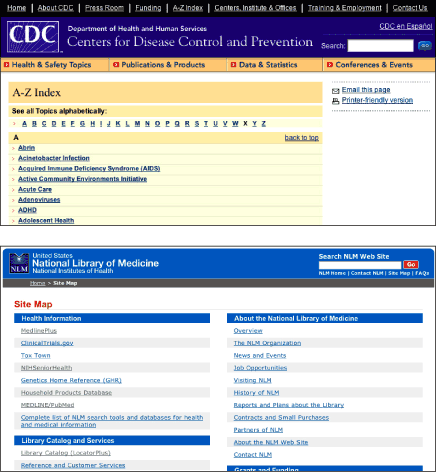Page Layout
Provide navigation tools
One of the greatest challenges facing Web users is finding the page that contains the information or functionality they are seeking. Navigation systems can point the way, but even a well-structured, user-centered navigation design is bound to fail at times. Questions will arise about a site’s information architecture and labeling system: for example, is location information under "About us" or "Contact us"? Is pricing information under "Products" or "Buy online"? Some ambiguity is unavoidable—designing an information architecture and labeling system that maps perfectly to all user expectations is impossible. When users cannot locate what they are seeking using page-based navigation systems, specialized navigation tools can be of use.
A number of navigation tools will work for different types of users and for different types of tasks. A reliable search function is useful for goal-oriented users who know what they are looking for. These same users also benefit from a site index that lists all site content alphabetically. A hierarchical outline of site categories, sometimes called a "site map," provides a site overview to help users determine where the page they are seeking lies within the overall site architecture (Figure 15.9). Another useful navigation tool is a quick links menu with links to commonly sought-after pages. This allows users to bypass navigation altogether and go directly to the page they are seeking.

Figure 15.9: The CDC A-Z Index is useful for users who want information about a specific topic. The National Library of Medicine Site Map provides an overview of the site contents, as well as direct access to specific topics. www.cdc.gov, www.nlm.nih.gov

